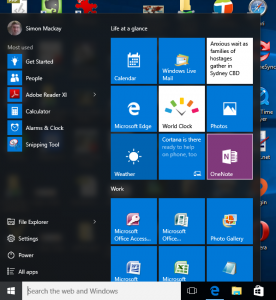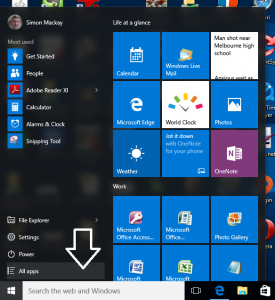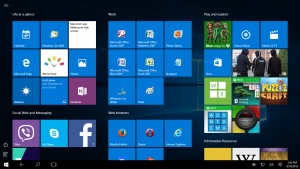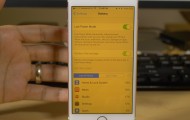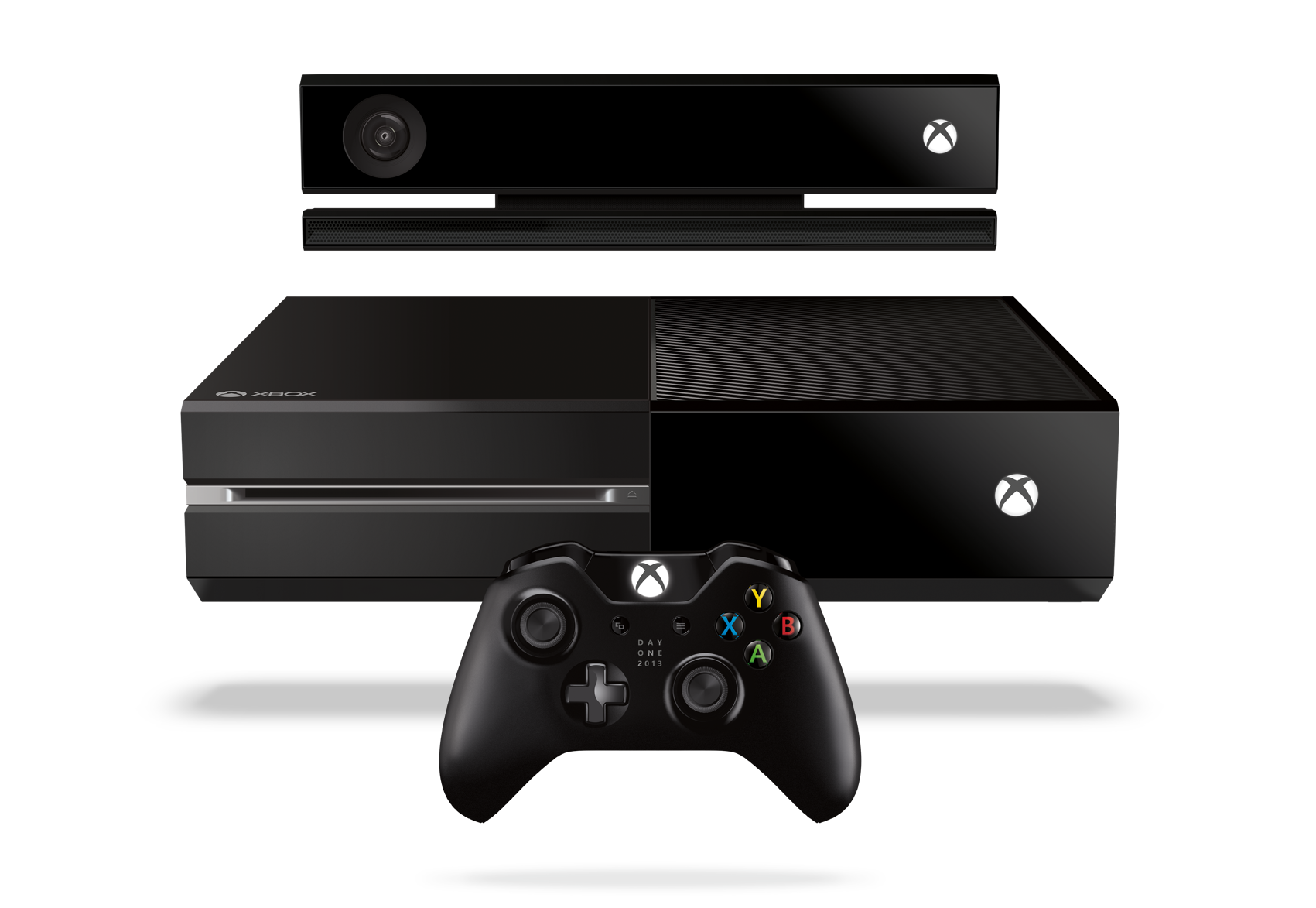Windows 7 and its predecessors had a traditional pop-up start menu with an option to see all the programs or the frequently-used programs on your computer. This was presented in a list rather than a cluster of icons or tiles.
But Windows 8 headed down a totally different path with a dashboard-style layout hat has all of the programs or a user-defined set of programs represented as tiles. This had thrown many computer users off the operating system and caused some unnecessary worry.
The Start Menu
Windows 10 brought back the pop-up Start Menu that looks like a combination of the traditional Start menu and Windows 8’s tile-based look. This includes the famed “Live Tiles” that are always updated with new content thus working like a dashboard.
In the early days of your experience with Windows 10, you can mess around getting that tile-based Start Menu area looking how you want. If you run Windows 10 on a touchscreen laptop or a computer with a touchscreen monitor, this menu style can work just as well for you.
Getting it right!
You can organise your tiles in to groups by dragging them in to the space between two groups to create a group or dragging them in to a group to have them part of that group. This can be done in both the traditional pop-up view and the Tablet Mode view mentioned later on at the end.
Then you can name each group by right-clicking or “dwelling” your finger on the group name then typing in the name you want to give it.
Browsing for that program
This will be a situation for those of you who have held out with Windows 7 or its predecessors, where you will be wanting to know where all of your programs have gone even though they aren’t on the Start Menu or Taskbar.
Browsing for that particular program? Click on “All Apps” to see a list of all programs on your computer. Then, click on any of the letters to bring up a list of alphabetical letters. Subsequently, you just need to click on the first letter of the program’s title to be sent straight to a list of the programs beginning with that letter.
You then have two options to have your program readily accessible. One is to “pin” your program to the Taskbar so it is always accessible and this setup may remind you of the station-preset buttons on your car radio. On the other hand, you could “pin” your program to the Start Menu where it will appear as a tile which you shift around until it is in the right place for you.
Tablet Mode
The Tablet Mode gives you a view that is not dissimilar to how you have operated your Windows 8 or Windows 8.1 computer. It is automatically selected if you detach a keyboard from your detachable-style “2-in-1” tablet or fold over a convertible notebook so the screen becomes a tablet. But you can manually select this mode on any Windows 10 computer.
As I have said just before, this doesn’t just those of you who work with tablet computers or 2-in-1 devices. You can use it with a laptop or desktop computer and it doesn’t need a touchscreen to benefit from this function. Rather you would use your mouse or trackpad to navigate around the screen and a scroll-enabled mouse earns its keep by allowing you to scroll downwards. In the Notification Menu, you have a button labelled Tablet Mode which you can use to toggle between this mod and the regular Desktop Mode.
I would recommending having your screen in the Tablet mode if you are trying to sort out the Start Menu groups after an upgrade because you can use the whole of your screen’s real estate to do this.
Search Bar
There is an always-visible Search Bar on the Taskbar which you can fill in your search requests for local or Web-hosted resources. This works with Cortana which is the personal digital assistant in the same vein as Siri or Google Now.
Here, ordering a search is as simple as clicking or tapping on the search area and typing in what you are after.
Conclusion
Anyone who has worked with any of Windows’ incarnations will find the Windows 10 Start Menu as something that doesn’t daunt you but allows you to get more out of the operating system.

